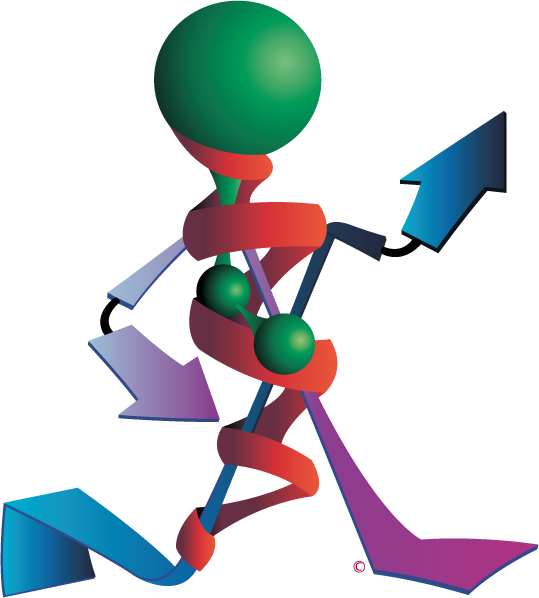Gene expression is the fundamental process by which the genetic code within DNA is translated into functional proteins, the workhorses of the cell. This intricate process involves two key steps: transcription (where DNA is transcribed into RNA) and translation (where RNA is translated into protein). Understanding the journey from RNA to protein is not only a cornerstone of molecular biology but also a critical area of research for advancements in medicine, biotechnology, and synthetic biology.
While this process may sound straightforward, it is tightly regulated and involves a myriad of molecules and mechanisms. Studying gene expression requires precise tools to isolate RNA, convert it into complementary DNA (cDNA), and amplify specific sequences.
Key Tools for Studying Gene Expression
To study gene expression, researchers rely on a variety of molecular biology tools and reagents. Below, we have highlighted some of the most essential products and techniques, along with recommendations for high-quality kits and reagents.
- RNA Isolation: The First Step
High-quality RNA is essential for downstream applications, such as reverse transcription and PCR.
- GET™ Total RNA: This kit is a gold standard for RNA isolation, offering high yields of pure RNA from a variety of sample types viz., blood, animal tissue, plant tissue and yeast. It’s fast, reliable, and minimizes genomic DNA contamination. The kit consists of highly efficient lysis buffer and DNase, accompanied by a Silica spin column design with optimized buffers for high yield and purity.
- Arrest™ Extraction Buffer: A versatile and widely used reagent for RNA extraction, especially for challenging samples. It consists of chaotropic agents and RNase inhibitors, is user-friendly (with a 10-minute single-step protocol), and is compatible with any RNA extraction method.
- Tri-Xtract™: Highly efficient, ready-to-use reagent for total RNA extraction devoid of protein and DNA contamination. The extracted RNA is best suited for Northern blots, Dot blot hybridization, poly (A+) selection, RNase protection assay, and in vitro translation.
- Reverse Transcription: Converting RNA to cDNA
After successfully isolating RNA, the next critical step is to transform it into complementary DNA (cDNA) using the enzyme reverse transcriptase. This conversion is a vital step for analysing gene expression, particularly when using techniques such as quantitative PCR (qPCR).
- Reverse Transcriptase (RT) : derived from Moloney Murine Leukemia Virus (MMLV), has been engineered to reduce RNase H activity, enhancing its ability to generate full-length cDNA from long RNA templates. Unlike some DNA polymerases, this enzyme lacks 3′→5′ exonuclease activity, ensuring high-fidelity synthesis without unwanted degradation.
- RNase Inhibitor (Murine) : This protein specifically targets and neutralizes RNases A, B, and C, safeguarding RNA integrity. Importantly, it does not interfere with the activity of Taq DNA Polymerase or Reverse Transcriptase, making it ideal for sensitive reactions.
- First strand cDNA synthesis kit: A dependable and user-friendly kit designed for reverse transcription, suitable for both quantitative and qualitative research applications. For streamlined cDNA synthesis, this ready-to-use master mix contains:
- MMLV-derived Reverse Transcriptase (with reduced RNase H activity)
- Recombinant RNase inhibitor (to protect RNA templates)
- dNTPs (for efficient cDNA elongation)
- Optimized buffer with stabilizers (ensuring consistent performance)
This formulation minimizes pipetting steps while maximizing cDNA yield, even from
challenging RNA samples.
- Quantifying Gene Expression by Quantitative Polymerase Chain Reaction (qPCR)
For amplification and quantification of specific DNA or cDNA sequences, quantitative Polymerase Chain Reaction (qPCR) is an indispensable technique. qPCR is a powerful tool for measuring gene expression levels.
High-Performance qPCR Master Mixes: This high-throughput-ready formulation reduces hands-on time while delivering reproducible, sensitive, and contamination-resistant results-perfect for large-scale screening and validation studies.
Ideal for real-time PCR applications requiring intercalating dyes, this mix includes:
- Hot-start Taq DNA Polymerase (reducing non-specific amplification)
- SYBR Green I dye (for sensitive dsDNA detection)
- Low ROX passive reference dye (for well-to-well signal normalization)
- dNTPs and stabilized buffer (ensuring robust amplification)
Designed for assays requiring hydrolysis probes (TaqMan-style), this mix contains:
- Hot-start Taq DNA Polymerase (for high-efficiency amplification)
- Low ROX dye (for plate normalization)
- dNTPs and optimized buffer (for consistent qPCR performance)
Combining reverse transcription and PCR amplification in a single tube, this mix offers:
- Reverse Transcriptase and Taq DNA Polymerase (seamless cDNA synthesis and amplification)
- Low ROX dye (for reliable quantification)
- Stabilized buffer with dNTPs (enhancing reaction stability)
- Protein Analysis: The Final Step
After translation, proteins can be analysed to understand their function, structure, and interactions. Techniques like Western blotting, ELISA, and mass spectrometry are commonly used.
Tips for Successful Gene Expression Studies
- Start with High-Quality RNA:
The success of downstream applications depends on the quality of your RNA. Always use RNase-free reagents and equipment.
- Optimize Your Reverse Transcription:
Choose the right reverse transcriptase and ensure your RNA is not degraded.
- Use Proper Controls:
Include positive and negative controls in your qPCR experiments to ensure accuracy.
- Validate Your Findings:
Use multiple techniques such as qPCR and Western blotting to validate results.
Conclusion
The transformation from RNA to protein is a complex and precisely coordinated process that forms the foundation of biological life. By utilizing the appropriate tools and methodologies, scientists can decode the mechanisms of gene expression, opening doors to revolutionary advancements in both science and medicine.
The tools and strategies highlighted in this blog are designed to achieve consistent and dependable outcomes that involve isolating RNA, synthesizing cDNA, or measuring gene expression.




